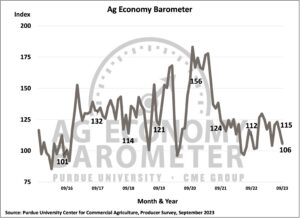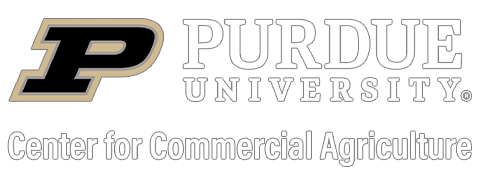Weakening crop prices and high production costs weigh on farmer sentiment

Weakening crop prices and high production costs weigh on farmer sentiment (Purdue/CME Group Ag Economy Barometer/James Mintert).
WEST LAFAYETTE, Ind. – Agricultural producers’ sentiment declined for the second month in a row, as the Purdue University/CME Group Ag Economy Barometer index fell 9 points to a reading of 106 in September. Producers expressed concern about their current situation as well as future prospects for their farms. The Current Conditions and Future Expectations Indices both declined 10 points to a reading of 98 and 109, respectively. Notably, all three indices stand below their readings from one year ago. This month’s Ag Economy Barometer survey was conducted from September 11-15, 2023.
“Weakening prices for major crops and ongoing concerns about high production costs and interest rates weighed on producers’ minds this month,” said James Mintert, the barometer’s principal investigator and director of Purdue University’s Center for Commercial Agriculture.
Producers continue to point to high input costs as a top concern for their farming operations in the year ahead. One-third of respondents in this month’s survey cite it as their number one concern, followed by rising interest rates, chosen by 25% of respondents, and lower crop and/or livestock prices, chosen by 22% of farmers. The percentage of producers choosing lower crop and/or livestock prices has increased since the beginning of the year, when just 16% of producers cited it as a top concern.
There was a small uptick in the Farm Capital Investment Index, up 2-points to a reading of 39 in September; however, three-fourths of the producers still said now is a bad time for large investments. The primary reasons among those who feel now is a bad time for large investments are rising interest rates and the high cost of machinery and new construction. Notably, 40% of producers who feel it’s a bad time to invest cited rising interest rates as a key reason, up from 35% last month, and up from 14% when this question was first posed in July 2022. This month there was a slight rise in the percentage of producers who said now is a good time to make investments, citing strong cash flows on their farm operations as their primary reason.
The Farm Financial Performance Index was unchanged in September compared to August, leaving the index at a reading of 86. In a nod to how variable conditions have been around the country during this growing season, there were small increases in the percentages of producers who 1) expect better conditions and 2) expect worse financial conditions compared to last year.
Producers remain relatively optimistic about farmland values, which Mintert called surprising given the percentage of respondents who expressed concerns about high input costs, rising interest rates, and the risk of lower crop and livestock prices. The Short-Term Farmland Value Expectations Index was unchanged at a reading of 126, while the long-term index rose 2 points to 153. Respondents who expect farmland values to rise over the next five years continue to point to non-farm investor demand for farmland along with inflation as the top two reasons for farmland values to continue rising.
The September survey included several questions posed to corn and soybean growers to learn more about their perspective on cover crops. Just over half (52%) of the corn/soybean growers said they currently plant cover crops on a portion of their acreage and, from this group, nearly half (47%) said they used cover crops on no more than 25% of their acreage. Among those corn and soybean growers who reported having used cover crops, 41% of respondents said they had used cover crops for 5 years or less, while 14% said they’ve been using cover crops for more than 20 years. Respondents who use cover crops cited improvements to soil health and erosion control as their primary reasons. Farmers who tried planting cover crops, but ultimately chose to discontinue their use, cited low profitability, lowered crop yields, insufficient soil benefits, and a lack of resources to plant cover crops.
About the Purdue University Center for Commercial Agriculture
The Center for Commercial Agriculture was founded in 2011 to provide professional development and educational programs for farmers. Housed within Purdue University’s Department of Agricultural Economics, the center’s faculty and staff develop and execute research and educational programs that address the different needs of managing in today’s business environment.
About CME Group
As the world’s leading derivatives marketplace, CME Group (www.cmegroup.com) enables clients to trade futures, options, cash and OTC markets, optimize portfolios, and analyze data – empowering market participants worldwide to efficiently manage risk and capture opportunities. CME Group exchanges offer the widest range of global benchmark products across all major asset classes based on interest rates, equity indexes, foreign exchange, energy, agricultural products and metals. The company offers futures and options on futures trading through the CME Globex® platform, fixed income trading via BrokerTec and foreign exchange trading on the EBS platform. In addition, it operates one of the world’s leading central counterparty clearing providers, CME Clearing.
CME Group, the Globe logo, CME, Chicago Mercantile Exchange, Globex, and, E-mini are trademarks of Chicago Mercantile Exchange Inc. CBOT and Chicago Board of Trade are trademarks of Board of Trade of the City of Chicago, Inc. NYMEX, New York Mercantile Exchange and ClearPort are trademarks of New York Mercantile Exchange, Inc. COMEX is a trademark of Commodity Exchange, Inc. BrokerTec and EBS are trademarks of BrokerTec Europe LTD and EBS Group LTD, respectively. The S&P 500 Index is a product of S&P Dow Jones Indices LLC (“S&P DJI”). “S&P®”, “S&P 500®”, “SPY®”, “SPX®”, US 500 and The 500 are trademarks of Standard & Poor’s Financial Services LLC; Dow Jones®, DJIA® and Dow Jones Industrial Average are service and/or trademarks of Dow Jones Trademark Holdings LLC. These trademarks have been licensed for use by Chicago Mercantile Exchange Inc. Futures contracts based on the S&P 500 Index are not sponsored, endorsed, marketed, or promoted by S&P DJI, and S&P DJI makes no representation regarding the advisability of investing in such products. All other trademarks are the property of their respective owners.
Writer: Kami Goodwin, 765-494-6999, kami@purdue.edu
Source: James Mintert, 765-494-7004, jmintert@purdue.edu
Media Contacts:
Aissa Good, Purdue University, 765-496-3884, aissa@purdue.edu
Dana Schmidt, CME Group, 312-872-5443, dana.schmidt@cmegroup.com
Related websites:
Purdue University Center for Commercial Agriculture: http://purdue.edu/commercialag
CME Group: http://www.cmegroup.com/
Photo Caption:
Weakening crop prices and high production costs weigh on farmer sentiment(Purdue/CME Group Ag Economy Barometer/James Mintert). URL. https://www.purdue.edu/uns/images/2023/agbarometer-23sepOG.jpg


